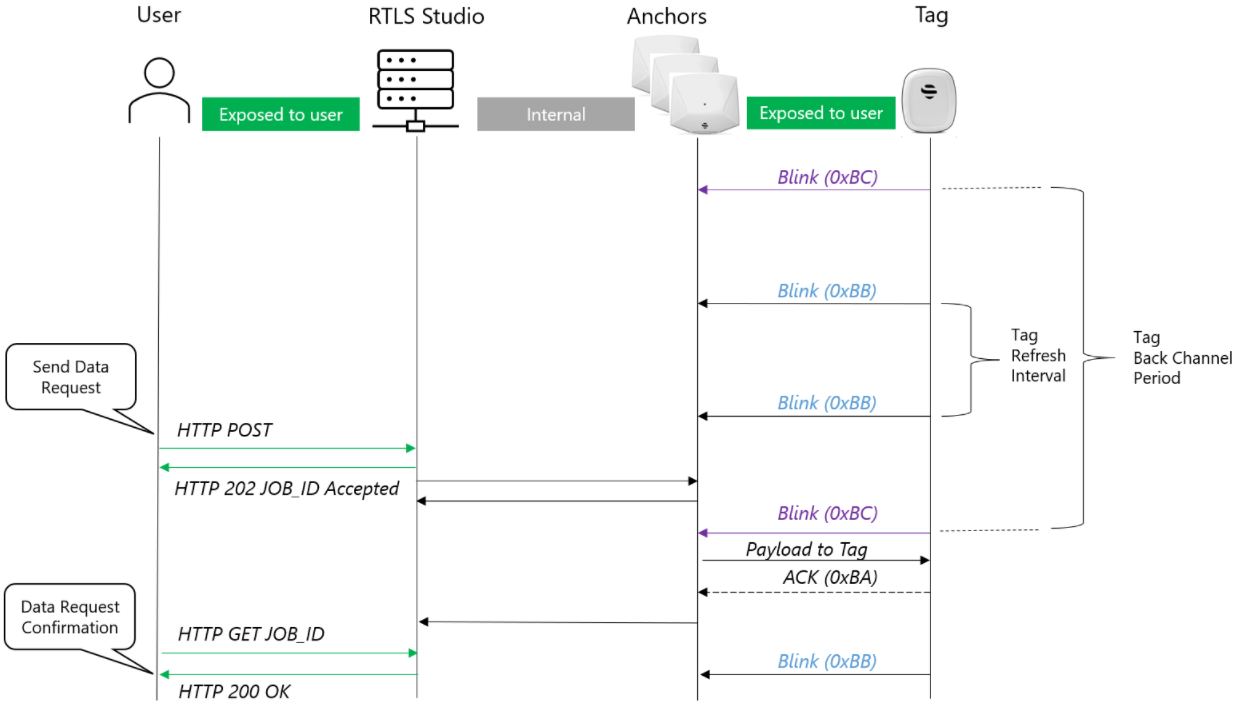UWB Backchannel
What is the Backchannel?
The very short answer would be the new feature that allows sending data from the server to tags.
The Sewio RTLS is built on top of the very scalable TDoA method which naturally uses only one-way communication. Tags transmit UWB blinks, which are used for both positioning and payload data reception on a server-side. The backchannel feature extends the functionality of the system to send data in the opposite direction.
Backchannel allows the implementation of full-featured applications, which utilizes bi-directional communication with UWB Tags.
In general, the possibilities of backchannel are broad. This feature allows sending custom payload via UWB message for various use-cases from telemetry data, through user information on display, to GPIO commands for numerous safety applications.
Example
Let’s assume a pick-by-light application for asset identification of KLT boxes within the PCB assembly fab. Knowing the precise position might not be enough, an operator would like to have a visual LED indication once he needs to find a particular KLT box within the pile of them. The backchannel application allows you to blink with the LED remotely via API on the selected tag. It is done using a REST request.
Backchannel System Requirements
The following versions of SW, FW, and setting are required to use the backchannel feature.
RTLS Studio: version 2.6.0 or newer
Anchor FW: version 3.1.6 or newer
Tag FW: version 3.127.7 or newer
Tag Leonardo Configurator 1.3.2 or newer
- Setting → Blink Profile = RF5
How-to
The backchannel feature is supported on the following Sewio HW:
Anchor Vista product line
Tag Leonardo product line
Let's Get Started
Any application is built based on the bi-directional transactions between the server’s API and tag(s). So, we need to handle two sides: RTLS Studio API and custom application within Tag’s firmware. Everything else on the communication path is just an internal complexity that is hidden for the user by purpose. Below you can find a sequence diagram of a single backchannel transaction.
- Server’s API
- The user needs to send requests and receive responses via REST API.
- Tag-side of application
- The second part of the application logic has to be implemented in the tag firmware in C language.
- The application handler is called every refresh blink interval of the tag. The app on the tag receives data and/or requests from the server and process or execute it. It can also send some data back to the server as an additional payload appended to blinks.
Backchannel Section Incudes
In the section Back-Channel, we will explain to you the communication, required tag setting, and the process of creating an application. It will be illustrated on the ready-made example of a pick-by-light use case.
The section includes:
On this page:
